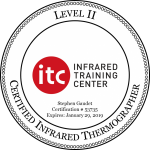With winter coming, unwanted pests trying to get warm by entering homes. Any holes along your domiciles exterior can become an access point for rodents. These rodents which are most commonly mice, can pick up on heat loss from poorly insulated homes. In this article I’ll cover the most common areas of entry I’ve found and how to reduce the chances of rodent entries.
Mice can bring in disease, chew through wires, soffits, ruin insulation, create holes in walls and ceiling and stain anything they urinate on. Rodents harbor a wide range of parasites such as mites and ticks that carry lethal pathogens. Even without parasites, rodents can directly transmit deadly germs excreted in their urine and feces. Think back to your history classes – do you remember the bubonic plague aka The Black Death that wreaked havoc through 14th century Europe? Rats and their flees were to blame.
Once inside a home where food, water, and harborage are readily available, rodents can breed prolifically. This results in tens or hundreds of rodents living and moving about in our homes. Disease organisms present within these populations can spread rapidly to infect areas, people, and pets. Rodents can easily move throughout the home undetected in the walls and ceiling by following wire and piping runs. Enclosed thermal imaging photos show cold air filing in the mice tunnels seen as blue shadows.
Here are a few examples:
Figures 1 & 2 are from a ranch style home, mice tunnels were found throughout the home’s ceiling. In figure 2, the soffit cover is out of position allowing mice to enter.
Once mice enter the soffits as seen in Figures 2a & 2b, a two-story home, they have full access to your home. The soffit acts like a super highway. Notice in Figure 2a that the hole is enlarged; chipmunks were found in this instance. Remember to check and seal corner trim on siding.
In Figures 3 and 4 we have a small opening between the roof line and the soffit. This is another common area for mice to enter the attic. Figure 5 shows the point of entry where mice were entering the house. We can assume that they sensed heat loss because the insulation is below the floor joists. These low insulation values not only attract mice, but they can cause ice dams too!
Heat sources in the attic space include split heating systems, uninsulated duct work, bathroom exhaust fans, recessed lighting, and low insulation. They all need to be properly insulated to prevent heat loss which will also reduce heating costs. Ideally the temperature in the attic space should be close to exterior temperatures if it is properly insulated and vented.
Tip: Next time you have frost or light snow on your roof look for any signs of uneven melting, that’s heat loss. Heat loss is costing you money!
Poorly sealed roofs offer rodents opportunities to enter. In figures 6 & 7 mice are entering left front corner of the garage which they used to gained entry into the garage ceiling, master bedroom closet, bedroom ceiling and attic space. Thermal imaging shows the entry and the path throughout the home.
Exterior areas to seal
All house wall penetrations need to be properly sealed. Use of spray foam is not advised. The foam is opened cell and will hold water creating moisture issues and bring a different pest…wood destroying insects. Filling small holes with caulking is usually the best method.
Figure 11 the A/C cooling lines need caulking.
Same problem with the gas lines entering the home, caulk, fig 12.
Bulkheads
Open holes around the bulkhead’s interior door allowing mice easy access to basement. Figure 13 mice entering through fiberglass insulation. In figure 13b open hole in door frame is allowing access into basement. Figure 13c is one of the many paths, wires.
In Figure 14, a bulkhead with no interior door installed offers multiple problems- access for rodents to enter, heat loss, and limited security from break-ins. A skilled thief could get past a bulkhead in seconds. Note insulation falling down, it’s filled with mice. Without the interior door installed mice and other rodents walk in and breed.
If the basement interior door is not completely sealed installing bait traps will have little to no effect. In fact I discourage clients from using bait traps, use snap or catch traps instead, mice like peanut butter. Bait traps poison the rodent which often dies in the walls or someplace you can’t reach leaving you with the odor for months.
When hiring an exterminator select someone that will find the entry points and seal them as well as treating for rodents. Otherwise this problem will never go away.
Areas that need insulation include the heating system, unwrapped boiler pipes or furnace with unwrapped heating ducts. Also, insulate the perimeter of basement foundation wall along the sill plate.
Having the correct tools and skills are necessary for a thorough home inspection. As you can now see, thermal imaging technology is a powerful tool against rodents and heat loss. This technology can also detect plumbing leaks, roof leaks, hot electrical circuits, hidden framing issues within the walls, missing insulation and more. Without thermal imaging, a buyer and their inspector could miss these important details. The NH Standards of Practice states “(j) “Home inspection” means the process by which an inspector visually examines the readily accessible systems and components of a home and which describes those systems and components in accordance with these standards of practice.” The key word here is ‘visually’. Wouldn’t you rather have an inspector that uses technology to reduce human error as much as possible?











